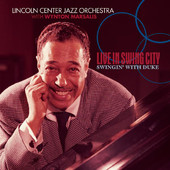Start here.
Thinking about DJing for swing dancers? Dancing a bit of lindy hop and looking for music? You’ll need some music.
I’ll say this right now: if you want to DJ for swing dancers and you don’t like jazz, then you should not be DJing for swing dancers. It’s not for you. If you’ve got this super cool modern pop song that really swings, stop. Stop right there. You’re not doing something new. Sure, play that action at home, dance to whatever moves your soul. But if you’re a swing DJ, you need to have and play swing music. That’s the bottom line.
Who’s who in the world of swing? I’m going to try to write a series of these posts about the important band leaders, bands, or artists, but knowing me this’ll be the only item that series :D Yolo, right?
Count Basie.

You must own Count Basie. Lindy hoppers like Frankie Manning tended to agree: Basie was the best. What made him so good? A great rhythm section (Walter Page: bass; Jo Jones: drums; Freddy Green: guitar; Count Basie: piano).

Great players like Lester Young on sax, and Buck Clayton on trumpet.
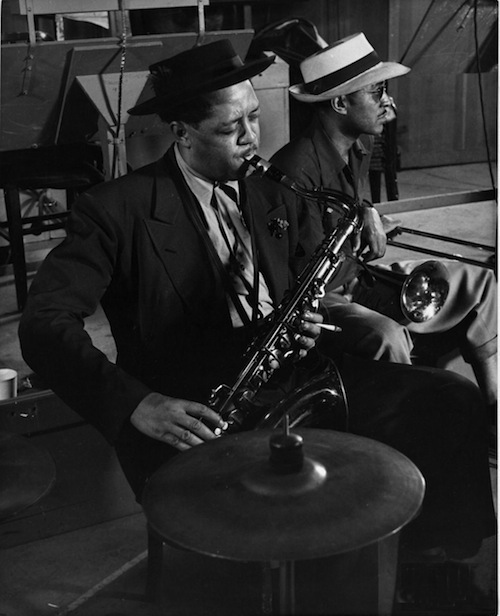
Peeps tend to talk about two phases in Basie’s huge recording career: the 1930s and 40s (‘old testament Basie’) and the 50s-60s (‘new testament Basie’). I’d probably add the ‘Moten era’ as a third phase – the earlier stuff Basie recorded with Bennie Moten’s band around about 1929-1932. Songs like Prince Of Wails, Moten Swing, Toby, Small Black. All fabulous. The sort of Basie that appeals to dancers who are into that earlier moment of swing – sort of pre-swing.
We could also talk about his later stuff with his small groups, or his work with Benny Goodman’s small groups, but I think his big band is really where it’s at, especially for a newer DJ or collector.
If you’re just starting your collection, you’ll need to get stuff from the new and old testament phases.
It’s difficult to list specific songs, as there’s just so much fabulous stuff. I’d go with the studio recordings at first, even though there’re some truly magical live recordings. Just because the quality can be kind of off-putting.
Here are some of my favourites, starting with the old testament band.
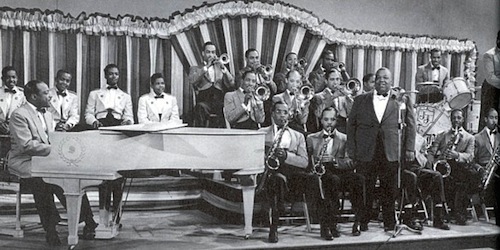
Honeysuckle Rose – 1937 – 217bpm. This is exciting instrumental stuff. Perhaps a bit challenging for newer dancers, structurally, but it’s so exciting and fun it’ll make them dance anyway. Yes, it’s fast, but yes, it’s fucking fantastic.
Don’t You Miss Your Baby – 1937 – 161bpm. With vocals by Jimmie Rushing, this is a great introduction to Kansas ‘shouters’. It has all the trade-marks of old testament Basie – shouting vocals, blues structure, uptempo fun, lots of energy, a fairly chunky piano (as opposed to the sparser stuff of his new testament), good, solid Freddy Green guitar keeping the beat, and a nice little trumpet part at the beginning. There are quite a few songs in this style from this period – I could just have easily have chosen ‘Sent For You Yesterday’ from 1938 (and I should have – I overplay that song badly). There are also lower tempo songs in a similar stompy blues style, even down into the lowest tempos which are great for blues dancing.
Topsy – 1937 – 196bpm. I think of this as classic old testament Basie Orchestra. There are quite a few songs with just this style and feel: it’s very much pop music, and it’s fuckloads of fun. A chunky, heavy rhythm section (so you know right where the beat is), a fun, dramatic melody, and a nice, energetic tempo. Other songs that are very similar: One O’Clock Jump, Dogging Around, Every Tub, Shorty George, Jumpin’ At The Woodside, and so on and so on. There’re a bunch of songs in this 1937-38 period that are just good, solid lindy hopping songs. The tempos are higher, but fuck, that’s what lindy hop was in those years. This is THE business.
The band’s style changes a little in 1939 and into 1940, with a bit more emphasis on the brass, and you can begin to hear jump blues coming in the future. Songs from this era that are worth looking at include Dickie’s Dream, Lester Leaps In (particularly versions by Basie’s Kansas City Seven – good times!). And then Basie and his rhythm section did some mindblowingly good songs with Benny Goodman’s small groups – songs like Wholly Cats, Benny’s Bugle, Royal Garden Blues, Gone With What Wind, all from 1940. This is my absolute favourite type of music. It tends to be quite fast, and you can hear the earlier moments of Basie’s shift to a lighter, more technically fancy style, probably a result of Goodman’s influence. Or the freedom of a small group so keenly devoted to exploring new and exciting things in swing music.
Tickle-Toe – 1940 – 223bpm. This has a lot in common with that bunch of stuff in the Topsy group, but things are changing a little. More brass, a slightly different edge. But still stamping good stuff, custom-built for lindy hop.
Easy Does It – 1940 – 150bpm. You need this song. You must have it. It’s iconic, and this medium tempo Basie version is perfect. Just perfect. It will make you swing out like Frankie. This is still very much in that earlier Basie style, but it’s definitely a sign of the new testament to come, with more complexity in the melody and arrangements, and a more interesting approach to dynamics beginning to happen.
In 1941 there were more recordings with Goodman’s small groups. This shit blows my mind. I fucking love it. But I don’t DJ it very often. It’s fast, complex, exciting, cerebral. Perfect. It’s like Basie’s blunt hammer is tempered by Goodman’s tightywhiteyness, and both become more interesting for the collaboration.
There are other big band Basie recordings from Basie in 1941/2 which are worth looking at, but kind of samey – 9:20 special, Feather Merchant, Down For Double, Feedin’ The Bean, One O’clock Jump, It’s Sand, Man!, Ay Now, etc etc. Great, but kind of samey.
Undecided Blues – 1941 – 120bpm.
Goin’ To Chicago Blues – 1941 – 94bpm.
Harvard Blues – 1941 – 94bpm.
These are all Jimmy Rushing vehicles, but you HAVE to get them. A sort of dark humour and piss-taking that really characterises the rough edges of these Kansas musicians. Very much the same sort of song, doing classic blues work with the machinery of a top shelf big band. Win.
This blues structure is significant for Basie: a lot of his stuff uses the 6 eights to a phrase structure, which is totes fine for social dancing and funsies, but will give you trouble if you’re looking for competition music. It can also be a bit predictable, which makes your dancing a bit ordinary. But fuck, it pisses all over anything non-swing. This shit is the business. And a good recording of One O’Clock Jump at 181bpm from 1942 is pretty much perfect lindy hop. PERFECT.
It’s worth pausing to look at the late 40s Basie before we get into new testament Basie. We can definitely hear the jump blues influence, rock n roll isn’t too far away, and a lot of this stuff has much in common with people like Louis Jordan and other vocal-driven pop music of the late 40s. Julia Lee is in this family too, and I guess it’s that brand of Kansas blues that really kicked off rock and roll. It’s fantastic. But it tends to be heading away from classic lindy hop territory. I find it great for DJing rock n roll/swing cross over crowds. Also it’s spanking fun.
Examples include:
Open The Door Richard – 1947 – 127bpm. Too many vocals to really rock it for DJing, but totes fun.
The Jungle King – 1947 – 127bpm. Pretty much the same song.
Free Eats – 1947 – 163bpm. Same, but a smear faster.
Swingin’ The Blues – 1947 – 157bpm. This is an interesting one. You can definitely hear new testament Basie, here. This is much more in the pocket (it has a more ‘delayed’, swinging feeling), but it’s still very near this jump blues stuff. I love it because it’s quite odd, structurally, but still good for dancing. I DJ it quite a bit.
Shoutin’ Blues – 1949 – 148bpm. This is a great one. Similarly odd, structurally, but a good, solid, chunky dancing song. You can hear some interesting experiments in dynamics here, as Basie starts digging on the new recording technologies. His playing style has definitely shifted into a more minimalist style – sounds tinkly, but still has a bit of thunder at the edges. And Freddy Green really is rocking the rhythm guitar, here.
Did You Ever See Jackie Robinson Hit That Ball – 1949 – 156bpm. This is a lot like that early block from 1947 with the lyrics and pop appeal. It’s an easy-win song that tends to go down well.
You’re My Baby You (vocal or instrumental version) – 1950 – 150bpm. I love this song. It’s got neat Clark Terry lyrics, and you can hear how he would eventually (and quite soon) head into supergroove territory. It feels like a pop song, and the vocals are really much of the focus.
Solid As A Rock – 140bpm – 1950. This is solid favourite. With vocals by the Deep River Boys, it’s a gospel favourite with a swinging big band edge that goes down well with dancers. It’s overplayed, and for my money it doesn’t really stand up to the overplaying the way other songs do. But this is a very useful song to have in your collection: shouting, clapping, a simple beat, a moderate tempo. It’s really a little out of the ‘proper’ lindy hopping realm, so it’s something I’d sprinkle into my set, rather than leaning on. Again, it’s a good song for a rock n roll/lindy hop crossover gig.
There are a few other jump blues songs in this period that really are a bit too far away from lindy hop to really work out. But at the same time, you get Basie doing things that are really, truly wonderful. And definitely heading into the new testament world.
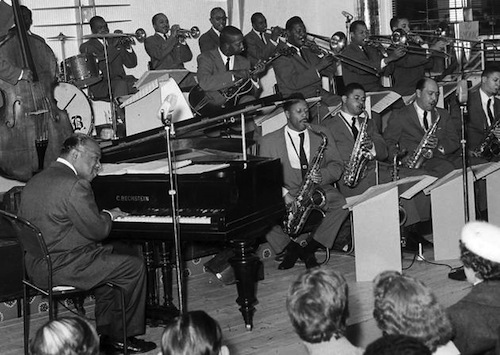
Jive At Five – 1952 – 136bpm. This is really new testament Basie. This is a moderate tempo, it has that characteristic use of dynamics that was Basie taking advantage of a big band using new recording technology, and it has contrasting moments of light and dark (tinkly piano and stompy rhythms; sax solos and sharp trumpets over stompy bass piano parts). This is really, truly, great lindy hopping action. It’s amazing that Basie was doing this 2 years after he did something like Solid As A Rock. It’s just such a completely different type of song.
Ok, now I’m going to do something terrible, and basically write off the 1950s and 1960s as ‘new testament’ as though they were all the same sorts of songs. They weren’t. Basie did all sorts of cool things with big and small bands, including exciting projects like re-recording his 30s hits with this new big band. You get to hear songs like Jumpin’ At The Woodside in stereo, with that stomping intro, but with modern solos and sensibilities. This is where you realise that Basie’s band was just fucking fantastic: experienced, talented professionals doing things that blow your brain. There’s a 1952 version of Every Tub (290bpm) that’s just so great. It makes you want to dance like a fool. But it’s further into the pocket than his 30s stuff, and the solos get weirdo, definitely echoing what was happening in bebop at the time. Excite!
There’s a Basie Verve Mosaic box set that compiles all this 50s stuff. And in it is a song I just adore:
Basie Beat – 1952 – 179bpm. Basie plays organ, there’s a nice little muted trumpet part, and the rhythm is solidly chunky supergroove. It really pounds along with lots of energy, and I just LOVE it. I think of this as new testament Basie at his best: musically complex and sophisticated, but at the same like a big barrel of bricks, pounding out a thumping good rhythm that makes you want to leap to your feet and fucking DANCE. Wow!
In the same year you hear the band redo songs like Goin’ To Chicago with Jimmy Rushing (79bpm) and higher tempo songs like Sent For You Yesterday. The brilliant thing about these songs is that you’re essentially getting the same sort of songs (both the 1930s and 50s versions), but you get a hifi version and a lofi version, a slicker version and a rougher version. So the same song can be used in different ways when you’re DJing, and appeal to different audiences. Yet it’s the same fabulous song.
In the 50s you get some of the songs I think of as ‘revival Frankie’ Basie. Songs Frankie would dance and teach to in the 80s and 90s. Solidly in the pocket, moderate tempos, totally accessible, fantastic dancing.
Down For The Count – 1954 – 115bpm. Yes.
Corner Pocket – 1955 – 137bpm. Feels like almost the same song. Goddess bless stereo sound and a big, fat orchestra on a mission.
Shiny Stockings – 1956 – 126bpm. Frankie’s favourite. Pretty much the same thing. Still fab dancing.
Splanky – 1957 – 125bpm. More of the same. More fab.
Moten Swing – 1959 – 125bpm. I like the live version from Breakfast Dance And Barbecue (you must buy that album). More of the same. Utterly wonderful.
At the same time as all this is going on, you get those nice hi-fi reworkings of the 30s and 40s classics, you get the supergroove stuff, the small group stuff, and you get the wall of sound big band fabulousness that is songs like…
Blues In Hoss’ Flat – 1958 – 144. Structurally simple, pretty much the definition of meat and potatoes. Fucking best dancing fun. BEST. It’s pretty much the epitome of crowd-pleasing safety song.
I think I’ll end this here. There are about three million other little pockets of Basie that I didn’t discuss. The vocal stuff with Joe Williams and Ella Fitzgerald. Williams and Fitzgerald singing a duet on Every Day I Have The Blues in 1956 – it’s like the ideal song. Kind of slow and boring for lindy hop, but pretty much the definition of super powers in collaboration. And I haven’t even touched on the 1970s ‘Satch and Josh’ (Oscar Peterson and Count Basie) recordings. They’re pretty much the definition of supergroove. And quite wow. You should definitely look them up on youtube – live recordings!
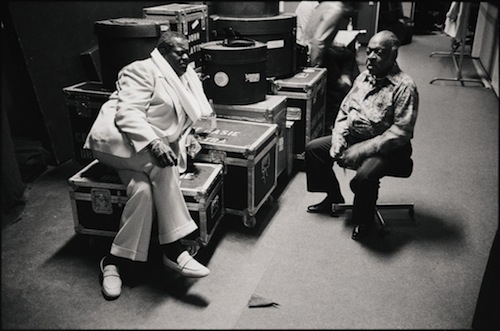
But Count Basie had a really long career, and he was really, really good for dancing. You have to have him in your collection if you’re a lindy hopper, and if you don’t have him and you DJ for swing dancers, you should be ashamed of yourself. ASHAMED. You’re also robbing yourself of a valuable DJing tool. Basie had such a long-ranging career, he pretty much has something for everyone, from the pre-swing to the supergroove, the total beginner to the nitpicking old stick dancer.
As a note, you might find this video about Basie’s band useful:

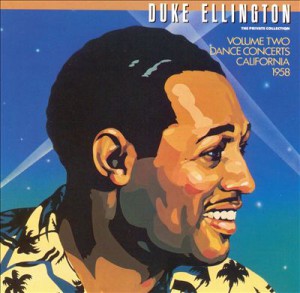
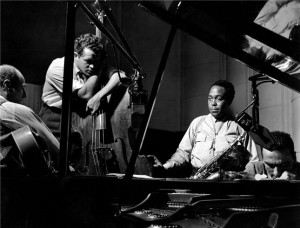
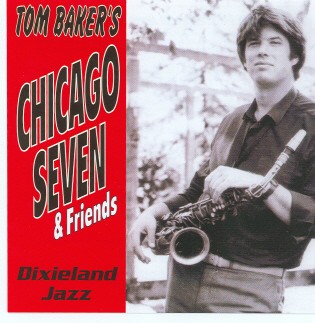
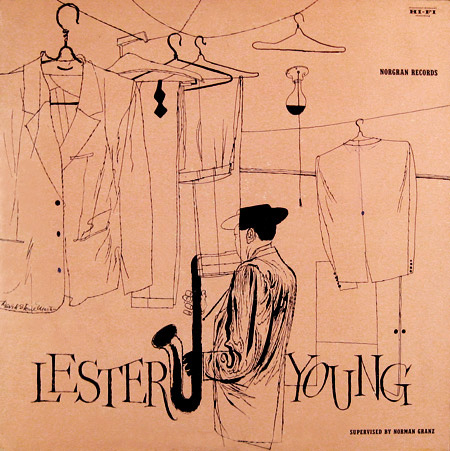






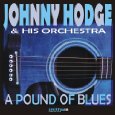 I’ve recently discovered the 1951/52 stuff by the Johnny Hodges band on this dodgy digital download album
I’ve recently discovered the 1951/52 stuff by the Johnny Hodges band on this dodgy digital download album 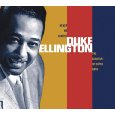 The Never No Lament: the Blanton Webster Band 3CD set was one of the first serious Ellington CDs I ever bought (though it was a lot cheaper then than it is now), and I bought it because dancers and DJs I admire recommended it on the
The Never No Lament: the Blanton Webster Band 3CD set was one of the first serious Ellington CDs I ever bought (though it was a lot cheaper then than it is now), and I bought it because dancers and DJs I admire recommended it on the 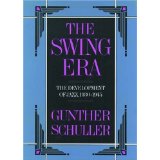 I used to have a long bus commute to uni which I’d spend reading my way through Gunther Schuller’s book The Swing Era: the Development of Jazz 1930-1945 and listening along with my whole Ellington collection on my ipod. I read music (haltingly), and Schuller spends quite a bit of his time examining scores in detail. I’m not entirely convinced by everything Schuller says, but Schuller’s is an interestingly scholarly approach to a musician who was as comfortable with concert halls as dance floors.
I used to have a long bus commute to uni which I’d spend reading my way through Gunther Schuller’s book The Swing Era: the Development of Jazz 1930-1945 and listening along with my whole Ellington collection on my ipod. I read music (haltingly), and Schuller spends quite a bit of his time examining scores in detail. I’m not entirely convinced by everything Schuller says, but Schuller’s is an interestingly scholarly approach to a musician who was as comfortable with concert halls as dance floors.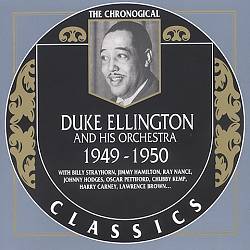 Most of my love for Ellington is centred on his earlier stuff and on those small group recordings. My interest tends to wane at about 1950, to be honest, but that’s not a strict rule. There’s a song called ‘B Sharp Boston’ which Ellington recorded in 1949 and which used to get around on those dodgy ripped compilation CDs as ‘Sharp B Boston’. I picked up the Chronological Classics Duke Ellington Orchestra 1949-1950 CD in about 2006, and discovered it was actually called ‘B Sharp Boston’, and that there was a bunch of other great stuff on that CD that makes for top DJing (I’ve written about this before in
Most of my love for Ellington is centred on his earlier stuff and on those small group recordings. My interest tends to wane at about 1950, to be honest, but that’s not a strict rule. There’s a song called ‘B Sharp Boston’ which Ellington recorded in 1949 and which used to get around on those dodgy ripped compilation CDs as ‘Sharp B Boston’. I picked up the Chronological Classics Duke Ellington Orchestra 1949-1950 CD in about 2006, and discovered it was actually called ‘B Sharp Boston’, and that there was a bunch of other great stuff on that CD that makes for top DJing (I’ve written about this before in 